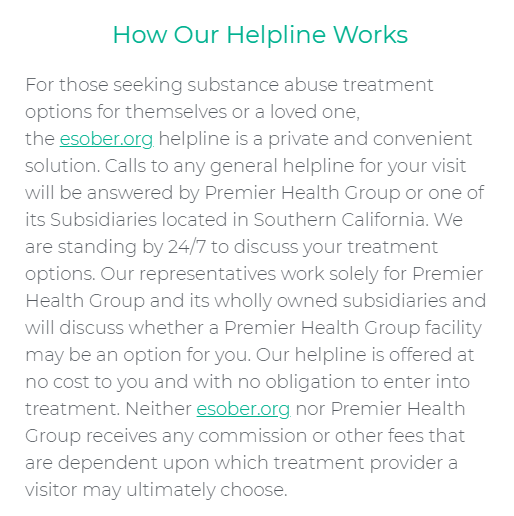Gabapentin, sold under the brand name Neurontin, is a first-line medication for neuropathy. It is a relatively new drug, only introduced in 1993, so researchers are still learning more about its side effects and its mechanism of action. Gabapentin impacts the Gamma-aminobutyric acid or GABA neurotransmitter, which inhibits brain activity. Although GABA blocks specific neural signals, it appears not to manipulate receptors that have to do with substance abuse.
Presently, the Drug Enforcement Administration does not classify gabapentin as a controlled substance. However, some states consider it a Schedule V drug, showing that it has potential (although low) for abuse. Gabapentin abusers mix it with opioids, benzodiazepines, or alcohol, which could be lethal. Ohio, Kentucky, and West Virginia have had spikes in gabapentin-related fatalities, and other states are recognizing that they could have emergent gabapentin abuse issues in their areas as well.
Is Gabapentin a Controlled Substance?
At present, the federal government does not list gabapentin as a controlled substance. States have the option to change this in case they see the need to—if they find serious evidence of misuse of the drug.
In Kentucky in 2016, more than one-third of drug overdoses were due to gabapentin. This spike led the Kentucky state government to pass laws regarding the regulation of the drug. Later on, Michigan, Tennessee, West Virginia, and Virginia reclassified the drug as well.
Risk for Addiction
Physicians prescribe gabapentin for various conditions. It works as a sedative, anticonvulsant, and pain medication. Doctors also use gabapentin for medication-assisted treatment. For instance, people recovering from alcohol or opioid disorders could get a prescription for gabapentin to reduce withdrawal symptoms.
Prescription drug abuse happens when a person uses these drugs above and beyond the doctor’s orders. Using medication without a prescription, using higher or more frequent doses than necessary, and making up or exaggerating symptoms to get a prescription are all considered drug abuse. When people cease these behaviors, they often cause withdrawal symptoms. Persons enrolled in substance abuse treatment programs are prone to gabapentin abuse.

In one study, 22 percent of the surveyed patients report misusing the drug because it intensifies the effects of methadone and increases the likelihood of intoxication. Gabapentin can also be an adulterant in heroin and other illicit drugs. Since it is uncontrolled, it is plausible for someone to falsify or exaggerate symptoms, obtain a prescription, and sell the products on the black market. If it follows the trend of other psychoactive prescription drugs, recreational use will rise, increasing drug addiction cases.
Why Gabapentin and Other Opioids Are Harmful
When taking depressants together with it, a person can experience an intensified high. However, mixing opioids and gabapentin could bring respiratory depression, which is the leading cause of death in opioid overdoses. Drinking these two drugs together increases the risk of respiratory depression by up to four times. When taken together, gabapentin and opioids can cause drowsiness, dizziness, impaired thinking and judgment, confusion, and more.
Signs of Abuse: What to Watch For
Gabapentin abuse exacerbates the struggles of people recovering from or dealing with opioid abuse. It also threatens their livelihood in the way more addictive substances do. Just because the federal government does not list it as a controlled substance does not mean it is harmless.
If your friend or loved one takes gabapentin but has no history of drug abuse, you must monitor them for signs of misuse. Some signs of abuse are changes in sleep or eating habits, taking it with other drugs, and acting “zombie-like.”
They could also exhibit behavioral changes. For example, if they start buying the drug on the street or refilling their prescription early, spend more time with new people and isolate themselves from family or old friends, and start taking from another person’s gabapentin supply, they might also be abusing the drug.
Gabapentin abuse solidifies and reinforces the behaviors of opioid addicts, which could mean prolonged or challenging treatments in the long run. It is why close monitoring of people prescribed this substance is necessary.
Use for Anxiety
At first, physicians used gabapentin to treat anxiety in persons with schizophrenia or bipolar disorder. Still, they didn’t use it for treating the specific symptom of the mental health issues themselves. It is not a formally approved treatment for anxiety or anxiety disorders at the moment, though physicians have used it as a frontline treatment in some instances of anxiety disorders.
There are numerous studies investigating gabapentin’s usefulness in treating or alleviating the symptoms of anxiety. In a 1998 review in the American Journal of Psychiatry, researchers reviewed various case studies. They found that gabapentin could be beneficial for people with generalized anxiety disorder and panic disorder.
Follow-up research studies considered gabapentin’s usefulness for social phobia and panic disorder. The study on social phobia showed that gabapentin works better than placebos but worse than standard treatments. Meanwhile, the study on panic disorders showed that it is not as effective as treatments like benzodiazepines or selective serotonin reuptake inhibitors.
Meanwhile, a randomized controlled study on the effects of gabapentin on a patient with generalized anxiety disorder showed that the medication is a promising treatment for GAD. The paper also mentions the drug’s effectiveness in treating social phobia, though it shows limited results in patients with agoraphobia and panic disorder.
Signs of Overdose
In recent years, prescription drug overdose deaths have steadily risen. Besides COVID-19, the opioid addiction epidemic is one of the most prevalent public health issues in the country. Gabapentin overdose is similar to heroin or Vicodin overdose.
Unfortunately, unlike opioids, there are no antidotes available for a gabapentin overdose. It is not possible to reverse the effects, should there be severe consequences to the overdose. The damage the body sustains after this kind of overdose could be permanent, even with early medical intervention.
An overdose is likely to happen when you use gabapentin in combination with drugs or alcohol. Drug dealers use it as an additive to heroin, which puts people struggling with heroin addiction at risk for overdosing. There is no way for people to know the ingredients of items they buy on the black market, which is why opioid overdoses are common.
Among the typical signs of a gabapentin overdose are ataxia, slurred speech, diarrhea, high or low blood pressure, dizziness, tremors, slowed heart rate, profound CNS depression, double vision, and hypoxia.
Hypoxia is one of the biggest threats that could come from an overdose. People with this condition suffer from reduced amounts of oxygen at the tissue level, causing a lack of oxygen to the brain. This typically happens when a person consumes gabapentin together with other CNS depressants. Depression of the CNS could cause slowed breathing or could stop it altogether. If your friend or loved one overdoses on a depressant, it is vital to get them medical attention as soon as possible.
Conclusion
Gabapentin is not a controlled substance, but its abuse can lead to several dangerous and even fatal conditions. People who mix it with other drugs are at risk for diarrhea, high or low blood pressure, ataxia, and hypoxia, which could be fatal. When a friend or loved one is prescribed gabapentin, it is vital to monitor their use of the drug and ensure that they don’t fall into abusing it.
Sources:




